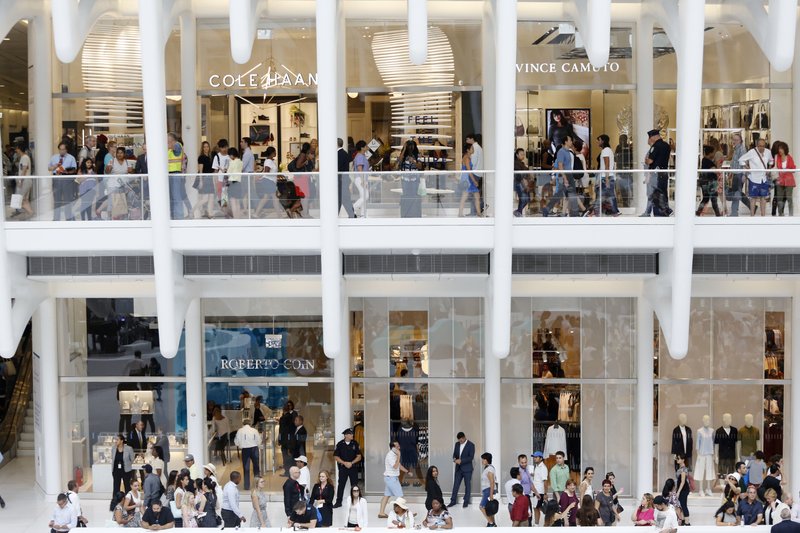WASHINGTON -- U.S. consumer prices edged up 0.2 percent in August as a surge in medical care costs offset flat readings for food and energy.
The result follows an unchanged figure in July. Core inflation, which excludes the volatile categories of food and energy, rose 0.3 percent, the Labor Department reported Friday. It was the biggest monthly increase since February. The climb in core inflation was led by a record jump in drug prices and the biggest rise in doctor and hospital charges in a quarter-century.
"Inflation pressures are building gradually," said Scott Brown, chief economist at Raymond James Financial Inc. in St. Petersburg, Fla. "There's really not much inflation in goods. Where we're seeing price pressures is in rents and health care. Wage pressures are building."
Over the past 12 months, core inflation is up 2.3 percent, but overall inflation has risen a more moderate 1.1 percent, still well below the Federal Reserve's 2 percent target for annual increases in inflation.
"We're seeing a little bit of a tick up in core inflation," said Russell Price, a senior economist at Ameriprise Financial Inc. in Detroit. "But most of the inflationary pressure is coming from housing rental costs and medical care costs. Other than those two categories, there really hasn't been much change in the inflation dynamics in the past few months."
The Fed meets next week and is expected to keep its key interest rate unchanged at a near-record low of 0.25 percent to 0.5 percent. The Fed raised rates by a quarter-point in December, but since then officials have held off on further rate increases, reflecting concerns about sluggish economic growth and periodic turbulence in financial markets.
Economists believe that the Fed's next rate change will be put off until at least December. Steve Murphy, U.S. economist at Capital Economics, said the latest report on consumer inflation is unlikely to alter that view.
"Domestic price pressures continue to build, but only very gradually," he wrote in a research note.
The Fed's preferred gauge of inflation, which is the Commerce Department's personal consumption expenditures measure, hasn't matched the central bank's 2 percent goal since April 2012.
"It's still going to be a long haul to get to the Fed's inflation target," said Price of Ameriprise. "They're likely to wait a bit longer" beyond next week to raise rates, he said.
The rise in the Labor Department's core inflation measurement in August was led by a record 0.9 percent uptick in drug prices and a 0.9 percent jump in the cost of medical services such as doctor visits and hospital stays.
It was the biggest one-month rise in this category since November 1990.
Food costs were unchanged in August, with the category that covers meat, poultry, fish and eggs falling for the 12th month in a row.
Energy costs were also flat in August as gasoline prices dropped by 0.9 percent. The decline was offset somewhat by a rise in electricity and natural gas prices.
Housing and rental costs were up 0.3 percent in August and have risen 3.4 percent over the past year. Medical care services are up 5.1 percent, the biggest increase for any of the major categories.
Airfares decreased 0.1 percent after a 4.9 percent drop in July.
The Labor Department's Consumer Price Index is the broadest of three price gauges from the Labor Department because it includes all goods and services. About 60 percent of the index covers prices consumers pay for services from medical visits to airline fares, movie tickets and rents.
Information for this article was contributed by Martin Crutsinger of The Associated Press; and by Shobhana Chandra and Michelle Jamrisko of Bloomberg News.
A Section on 09/17/2016
